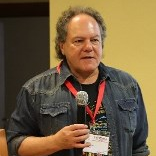Applications of Mössbauer Spectroscopy in Meteoritical and Planetary Science—In Memory of Dr. Göstar Klingelhöfer
A special issue of Minerals (ISSN 2075-163X). This special issue belongs to the section "Mineral Geochemistry and Geochronology".
Deadline for manuscript submissions: closed (24 April 2020) | Viewed by 10514
Special Issue Editor
Interests: Mössbauer spectroscopy; iron-containing biomolecules and pharmaceuticals; biomedical applications; iron-bearing minerals in meteorites; iron-containing nanoparticles and nanostructured materials
Special Issues, Collections and Topics in MDPI journals
Special Issue Information
Dear Colleagues,
Mössbauer (nuclear γ-resonance) spectroscopy is a powerful technique that is actively used in various fields from physics and chemistry to biology and medicine. R. Mössbauer, who observed nuclear γ-resonance in 1957, got a Nobel Prize in physics in 1960 for this discovery. 57Fe is most widely used nuclei in Mössbauer spectroscopy. Therefore, a large variety of compounds containing iron can be studied by Mössbauer spectroscopy. It is well known that planetary minerals contain a number of iron-bearing compounds. Therefore, the matter from various meteorites, asteroids and planets can be studied using Mössbauer spectroscopy as additional powerful technique. This Special Issue will consider the bases of Mössbauer spectroscopy and reviews on various results of more than 50 years of experience of Mössbauer spectroscopy of meteorites and recent investigation of Mars’ surface using two rovers.
This Special Issue will be dedicated to the memory of Dr. Göstar Klingelhöfer, who was a pioneer of Mars investigation using Mössbauer spectroscopy and untimely passed away last January.
Dr. Michael Oshtrakh
Guest Editor
Manuscript Submission Information
Manuscripts should be submitted online at www.mdpi.com by registering and logging in to this website. Once you are registered, click here to go to the submission form. Manuscripts can be submitted until the deadline. All submissions that pass pre-check are peer-reviewed. Accepted papers will be published continuously in the journal (as soon as accepted) and will be listed together on the special issue website. Research articles, review articles as well as short communications are invited. For planned papers, a title and short abstract (about 100 words) can be sent to the Editorial Office for announcement on this website.
Submitted manuscripts should not have been published previously, nor be under consideration for publication elsewhere (except conference proceedings papers). All manuscripts are thoroughly refereed through a single-blind peer-review process. A guide for authors and other relevant information for submission of manuscripts is available on the Instructions for Authors page. Minerals is an international peer-reviewed open access monthly journal published by MDPI.
Please visit the Instructions for Authors page before submitting a manuscript. The Article Processing Charge (APC) for publication in this open access journal is 2400 CHF (Swiss Francs). Submitted papers should be well formatted and use good English. Authors may use MDPI's English editing service prior to publication or during author revisions.
Keywords
- Mössbauer spectroscopy
- Meteorites
- Mars
- Iron-bearing minerals
- Hyperfine interactions
- Iron-bearing phase composition
- Fe2+ partitioning in silicate phases
- Temperature of cation equilibrium distribution in silicate phases
- Systematics of H, L and LL ordinary chondrites
- Meteorites weathering and the fusion crust
- Estimation of terrestrial age of ordinary chondrites





